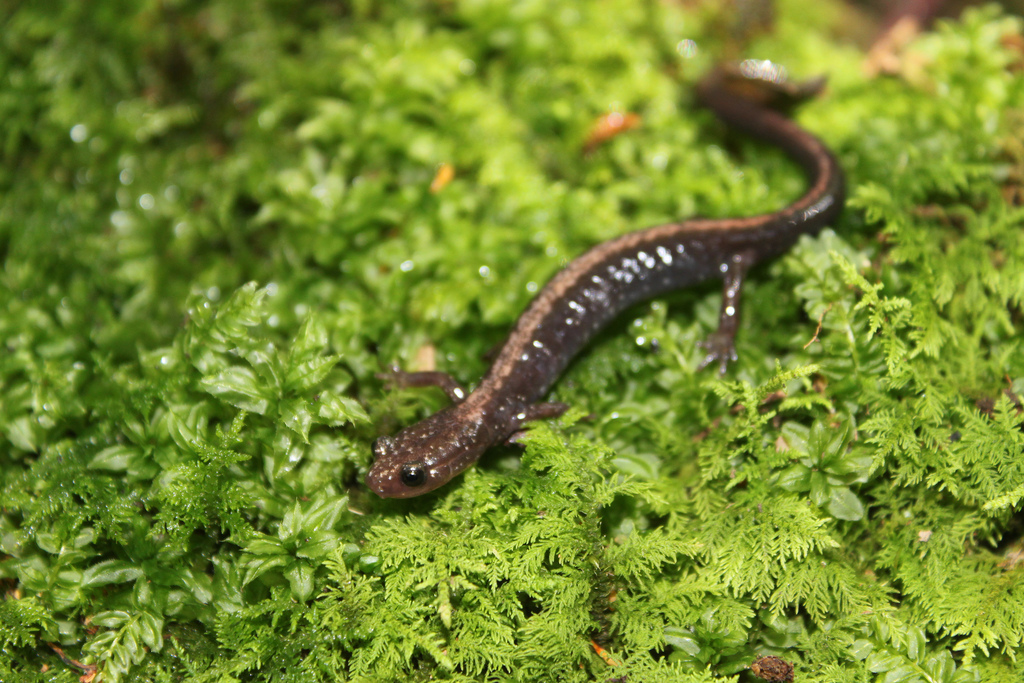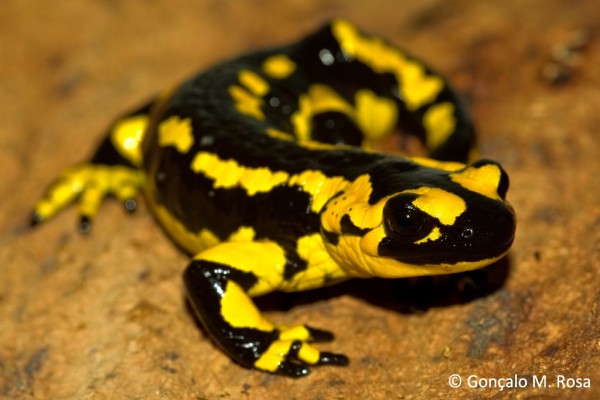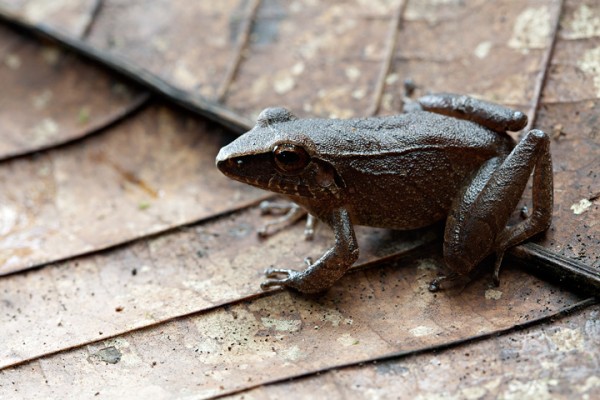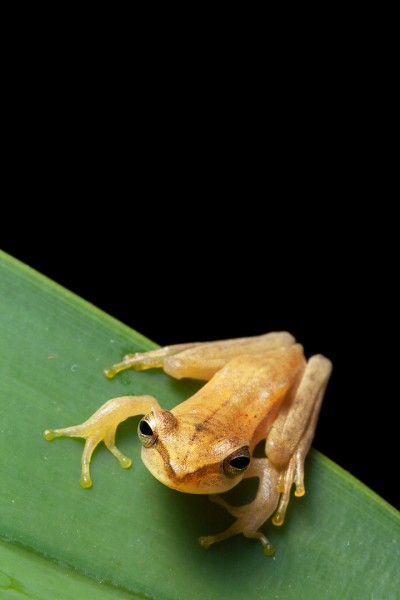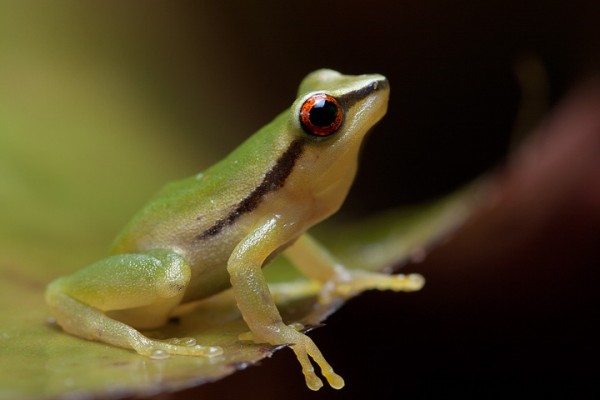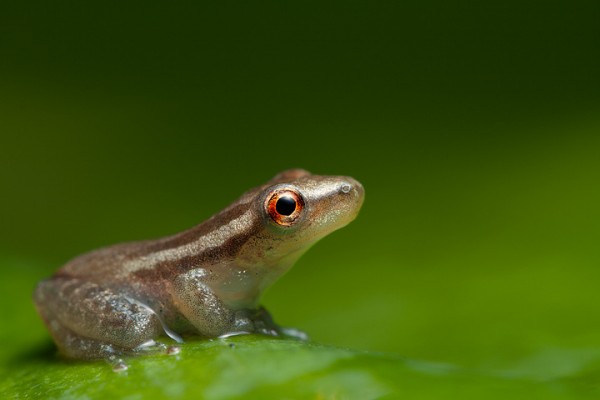Cute Frog of the Week: September 10, 2012
Ladies and gentlemen, boys and girls, step right up to see one of the world’s most astounding sights! This phantasmal poison frog is a vision. With red and white stripes, the frog dazzles the eyes like a circus tent. Don’t forget to peek underneath! The belly of this frog is swirled with the same red and white colors. But don’t get too close. The bright red signals danger! This frog secretes a toxin through the skin as protection against predators. Listen closely in the morning hours, and you might hear an advertising chirp or call from this amphibian.
Take a long look at this endangered amphibian; it may be your only chance to see it. This frog’s home in Ecuador is being taken over. Excessive development and logging are destroying the forests in the Bolivar Province, while the rivers are being poisoned by pesticides and pollutants. These factors make it one tough life for a frog. Even if this amazing frog survives these problems, the chytrid fungus could still devastate populations. The IUCN lists the phantasmal poison frog as endangered. To curb intentional deaths, trade of this fantastic frog is regulated under Appendix II in CITES.
Photo by Deepinon.
Every week the Panama Amphibian Rescue and Conservation Project posts a new photo of a cute frog from anywhere in the world with an interesting, fun and unique story to tell. Be sure to check back every Monday for the latest addition.
Send us your own cute frogs by uploading your photos here: http://www.flickr.com/groups/cutefrogoftheweek/



